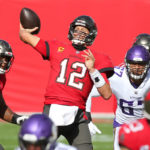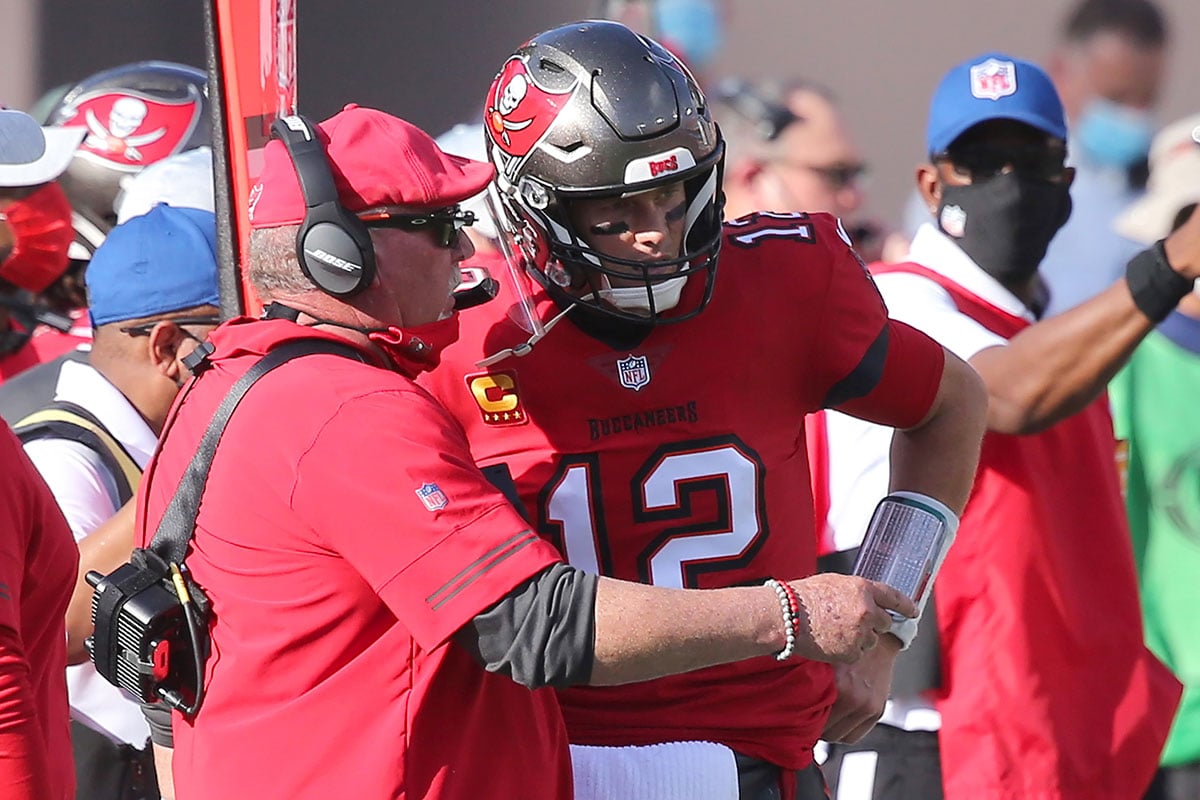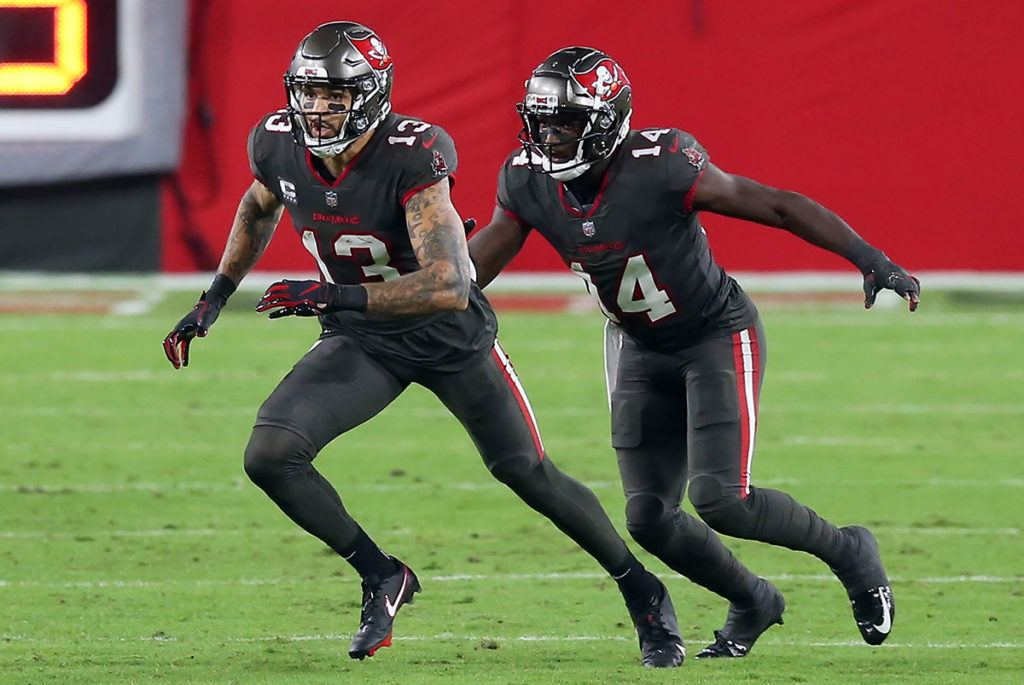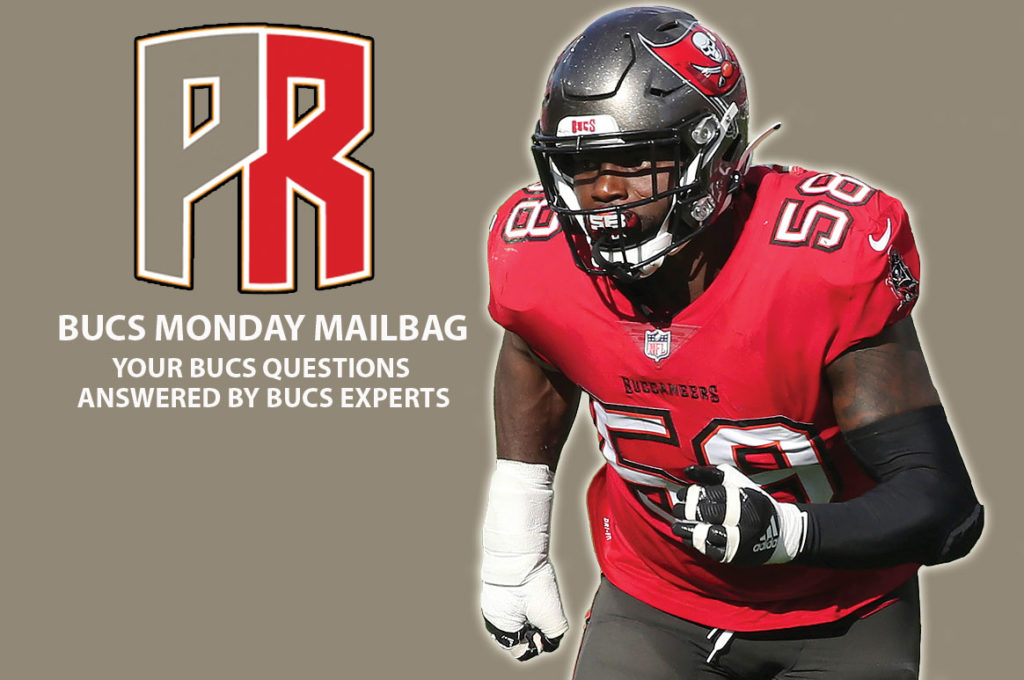Throughout the 2020 season, Bucs fans and media clamored for an increased use of play-action. Behind turnovers, explosive plays are the best indicator of success in today’s NFL. One of the best ways to manufacture big plays is through the usage of play-action passing. Teams can create splash plays with greater efficiency on play fake passes compared to drop-back passes.
Why Does Play-Action Matter?
For a simple example on the importance of play-action, look at the best teams in the league. Play-action was used on an average of 22% of pass plays in 2020. Of the 13 teams that won ten or more games last season, ten were above average in play-action percentage. Of the 14 playoff teams, 11 were above average. The three teams in both cases that did not make the cut were the Tampa Bay Buccaneers, New Orleans Saints and Pittsburgh Steelers.
After losing three out of four games entering the bye week, there was immense cause for concern for the Bucs offense. While they had put up some decent performances, efficiency and consistency were hard to come by. In response to their struggles, the Bucs use of play-action passes increased significantly.

Bucs QB Tom Brady – Photo by: Cliff Welch/PR
After the bye week, including the playoffs, the Bucs ran play-action on 27.4 percent of their pass attempts. However, they only used play-action on 21.3 percent of pass plays for the entire 20-game season. That means that before the bye week, play-action was called on just 17.7 percent of passes. That mark put Brady 33rd out of 36 qualifying quarterbacks in terms of play-action percentage, per PFF.
There is perhaps no better indicator of the power of play-action than Bills MVP candidate Josh Allen. His 2020 play-action percentage was 33.4 percent, compared to his 2019 value of 22.7 percent. That’s an anecdotal, yet effective example of how play-action can improve quarterback play and offensive efficiency. Buffalo OC Brian Daboll was an offensive assistant in New England, not to mention offensive coordinator for Alabama. Both innovative organizations when it comes to offensive football.
The use of play-action by forward-thinking offensive coordinators, such an Andy Reid, has aided the growth and success of young quarterbacks like Patrick Mahomes. Mahomes has always used play-action on more than 28 percent of his attempts, well above league average. Play-action because it manipulates the aggressiveness of NFL defenses, particularly at the linebacker position. Moving defenders creates time and space for receivers to make plays on the ball on relatively high percentage throws. Play fakes also provide extra time for pass protection, as defensive linemen eye the fake handoff and are slower to enter their pass rush plan.
Bucs Play-Action = LETHAL
The Bucs led the NFL in expected points added per play from week 14 to Super Bowl LV. In the tables below, you can see the disparity of Brady’s play when using play-action, compared to drop-back passes after the bye week. See in particular the difference in touchdowns, interceptions, passer rating and EPA.

Byron Leftwich heavily favored play fakes on first down with 53 of 75 (70%) attempts coming on first down. Statistically, utilizing play-action on first down has a greater chance of success than any other down in neutral run-pass situations. During the playoffs, the Bucs used play-action at above the league average rate in three of the four games. The exception came against the Saints, which was by far Tampa Bay’s least productive offensive performance.
Per PFF, Brady was 2nd in PFF grade, 2nd in yards per attempt, 2nd in big time throws during the regular season on play-action passes. Big-time throws are defined by PFF as “a pass with excellent ball location and timing, generally thrown further down the field and/or into a tighter window”.
Brady was also 1st in average depth of target, indicating the blend of Arians downfield attack with play-action. This production came despite the Bucs having the 2nd most drops (10) and highest drop percentage (11.1 percent) of any team using play-action in 2020. In other words, if the receivers improve, the Bucs already deadly play-action attack can become even more lethal.

Bucs RB Leonard Fournette – Photo by: USA Today
One draw back from the Bucs use of play fakes was the inability of the Bucs running backs to pass protect. This forced the Bucs into utilizing a 6th offensive linemen on 24 percent of their play-action passes after the bye week. That spot is then taken away from one of the many elite receiving talents on the Bucs roster. Would you rather see Josh Wells or Antonio Brown on the field? I know my answer.
The addition of Giovani Bernard is a step in the direction toward fixing this problem. He graded as the third best pass-blocking RB in the league last year, per PFF. Compare this to Ronald Jones’ miserable 46.8 and Leonard Fournette’s brutal 28.4 grade, and you can see how keeping Brady upright might be Ke’Shawn Vaughn’s best chance to see playing time in 2021.
Impact On 2021 Season
An increased usage of play fakes should remain in Tampa Bay’s offense throughout the 2021 season. Brady’s play-action rate of 27.4 percent over the team’s 8-game winning streak, if extended over a 16-game season, would have resulted in Brady’s 2nd highest percentage since 2013, per PFF.
The Bucs have several effective play-action concepts to beat single-high coverage teams. And within the NFC South, all the Bucs opponents are single-high dominant. It should be noted, the Saints used two deep safeties to dull the Bucs passing attack throughout the season, including playing two deep safeties on 78 percent of pass plays in the divisional round of the playoffs.
Self-evaluation should indicate to Bruce Arians and Byron Leftwich how potent the use of play action was for them in 2020. While Arians and Leftwich have some exceptional play fake concepts, they simply did not run them enough in 2021. The Bucs won a Super Bowl despite this, although their marked increase in play-action throughout the playoffs was a huge factor. They could easily become the league’s top offense in 2021 if they can embrace this change whole-heartedly. All the talent is in place, and play-action is the best way for the coaching staff to maximize it.
Jack Barrett is Pewter Report's newest contributor, bringing a knowledge of advanced analytics to the team. Jack prides himself on not only understanding and articulating the game from an X’s and O’s standpoint, but also providing eye-opening stats to educate fans on the intricacies of the game.
Hailing from the U.K., Jack is fairly new to the NFL world. His first-ever football game was Tom Brady's miraculous comeback over the Falcons to win Super Bowl LI. From that point forward, Jack has quickly acclimated himself to the NFL game through rigorous study and viewership.
Jack's other interests include soccer, which he played at a collegiate level, cooking and fashion. He’s looking forward to providing Buccaneers fans with unique content and analysis to deepen readers knowledge of the team.




